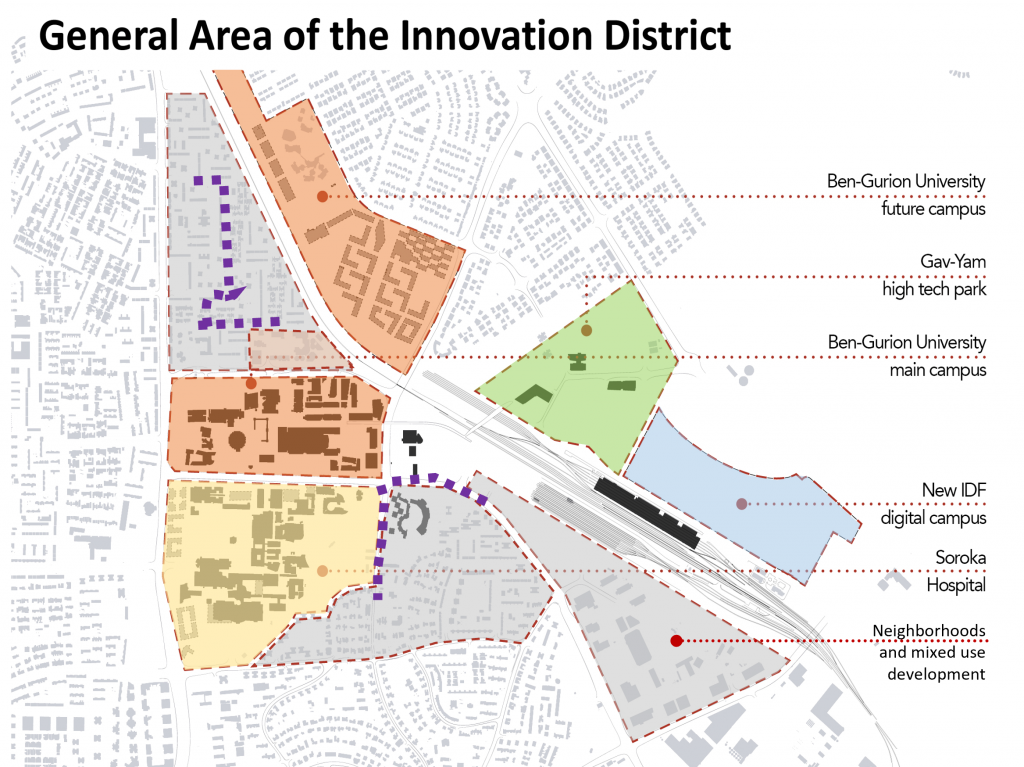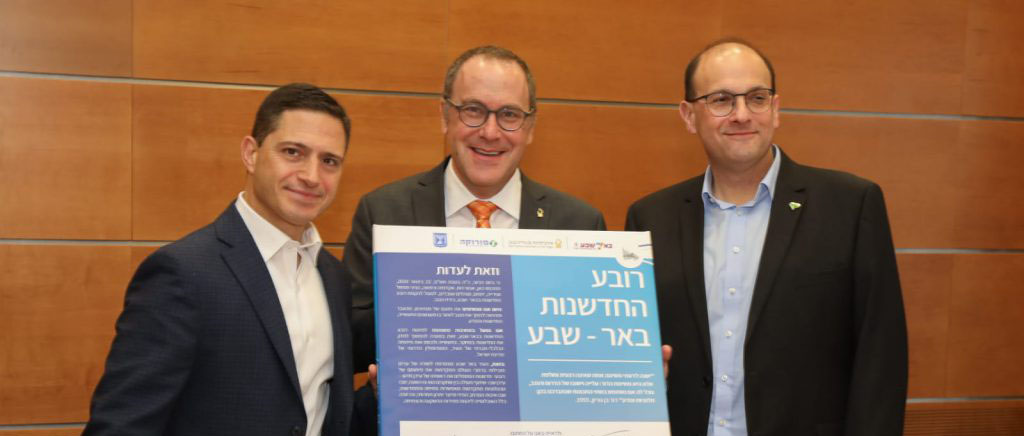Brandvoice
Beer Sheva is a kind of an oasis. At least, that is the feeling you get when you enter the city from the Hativat Hanegev Interchange. In a mere moment, the landscape changes from vast desert views to green and urban sceneries. Driving down Ben Gurion Boulevard reveals the enormous potential of the Negev’s capital – a panoramic view that includes the buildings of the Gav Yam Negev high tech park. When you go further, Ben Gurion University and Soroka Medical Center are visible as well.
This is where the Beer Sheva innovation district will be built, and it is planned to spread across an area of 650 acres. The community is an innovative and evolving urban model. One geographic location of a city will become home to multiple leading companies and institutions, which will create an innovative ecosystem. The connections between the institutions and the community will surely mobilize growth and economic development.
The plan for developing first came together during 2018, by The National Economic Council initiated it in the Prime Minister’s Office, the Ministry of Construction and Housing, the Israel Land Authority, and the Ministry of the Interior.
The Beer Sheva municipality won the open bid; hence, it will soon become the first city in Israel to move forward with a strategic plan to develop an innovation quarter.
Soon, the university (that approximately 20 thousand students attend), the high tech park (where about 2,500 developers work), and the medical center (that has around 4,500 employees) — will be joined by an IDF telecommunications campus, where approximately 5,000 recruits and career soldiers are supposed to serve. The national railway will have a functioning station right in the middle of the new quarter, and parts of C, D and Ramot neighborhoods will also be included in the newly developing district.
“The cooperation between the institutions and the geographic proximity between them will lead to technological breakthroughs, scientific discoveries, and economic infrastructure on a global scale. This is where the fevered minds will come from, and this is where the ideas that will shape the future of the whole world will originate. Beer Sheva is turning into a national-technology hub and an international knowledge center,” says Rubik Danilevich, the city’s mayor, adding: “There is no other city in the world that concentrates so much tech-knowledge and excellent human resources in such a small radius.”

Three fields of research
A team of experts from the Brookings Institute, which is based out of Washington D.C., defined innovation districts as “geographic areas in which institutions and anchor companies gather to create connections with small companies, start-ups, and business incubators. These areas are characterized by compact dimensions, technologically well-equipped, and offer mixed-use housing, offices, and commercial space,” says the institute.
Current research indicates that over 100 innovation districts are established all over the world, including in Barcelona, Kendall/MIT Square, Melbourne, and Saint Louis. To design a unique approach that explicitly suits Beer Sheva and the Negev area, interviews with local entities and a comprehensive qualitative analysis were conducted beforehand.
The results were precise: the innovation district should focus on three fields of research – digital health solutions, desert-oriented technologies, and cyber. For example, in digital health solutions, as part of the establishment of the innovation district, the plan is to turn the medical library at the Soroka Medical Center into a hub for innovation and digital health and a center for entrepreneurs in the field. There was even a proposal to establish the “Negev Bio-Bank” for advancing personalized medicine and expanding the cyber incubator to areas of digital health.
“Soroka is the only super-center for over a million residents, in a geographic area that constitutes over 60% of the population in the State of Israel. As such, the ability to gain significant insights into advancing the health of Negev residents and advancing world science is unique in Soroka,” says Dr. Shlomi Kodesh, director of the University Soroka Medical Center by Clalit group.
“We think integrating the academic field and the industry into our clinical and research endeavors is very important. This combination is the perfect model of rapid and significant development in the world of medicine. The work in the medical center area allows companies to contact physicians, observe procedures in a clinical setting, participate in team discussions, and constantly look into discoveries through the area integrated health system. The technological abilities, the scientific knowledge, the vast databases, the multidisciplinary research that is active in Soroka, along with collaborations with systems and non-governmental companies such as the current collaboration in the innovation district — all of these make up the platform that will advance a healthier future for all of us.”
Furthermore, there will be extra attention dedicated to desert-oriented technologies, and an international center for climate change will be established in the new district. The center is expected to leverage global mobilization for the issue and address health, water shortages, resource efficiency, food security, and desert research. The establishment of a branch of the MIT Media Lab in desert urbanization for the development and export of knowledge is also being examined.
The National SOC (Security Operations Center) is already active in the cyber field, responding to security incidents for national infrastructures through the National Cyber Headquarters. Affordable workspaces will be established within the quarter, and it is expected to form a local cyber community that will attend professional events, international host conferences, etc.
“The innovation district is no longer a project but a significant landmark in the emerging history of the State of Israel and the Negev area in particular. I can already envision how the district will look: the whole area will be bustling with activity: innovative projects, promising new start-ups, technological and scientific advancements, blooming research, and multiple projects and collaborations that will be realized,” says Professor Daniel Haimovich, President of Ben Gurion University. “Something big is about to happen in this district, and it will set the stage for ongoing action toward fulfilling earlier dreams.”
Connecting to the community
The planning team understood that there is a significant advantage to physical proximity between the different institutions built in the quarter. The goal is to create a lively urban business district by other means: Ben Gurion Boulevard will be upgraded and adapted as the spine of the district.
The municipality also plans to make physical changes to the area that will improve walkability and bike infrastructure within the quarter and invest in quality public spaces, creating shade structures, enhancing the appearance of public space, etc.
It is no coincidence that the quarter is also planned to include parts of the nearby neighborhoods, and the ultimate goal is to connect the community to the district to enable its growth. The plan is to establish an employment development center that will conduct training, identify employment opportunities within the district, and provide job placement services.
As in, for now, the joint management team for the district is established, and it will include an administrative head backed with a dedicated staff that will promote the development of the district.
BrandVoice is Forbes’s Marketing content brand.





